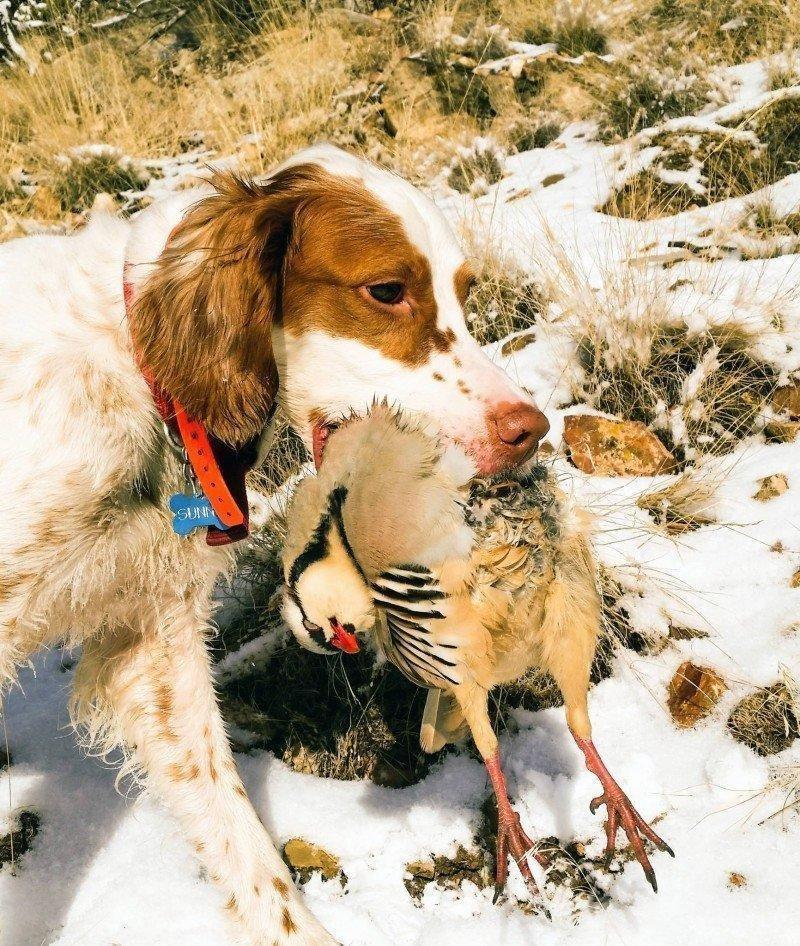DWR Press Release
Falling snow is good news for chukar hunters. Once snow starts to fall, chukars—which roam over a larger area during the warmer months—concentrate in smaller areas. That makes it easier to find the birds.
Chukar partridge also they live in some of Utah’s driest areas. That’s another reason why they’re a great bird to hunt in the winter. You won’t have to worry as much about getting your vehicle stuck in snow, or hiking through deep snow, like you might while participating in other hunts. Colder weather also makes hiking less strenuous. And rattlesnakes are hibernating now, so you don’t have to be concerned about them either.
“In my opinion,” says Jason Robinson, upland game coordinator for the Division of Wildlife Resources, “winter is the best time of the year to hunt chukars.”
Robinson says another advantage to hunting chukar in the winter—or anytime during the season—is the tasty meal the birds provide. “Chukar are the best-tasting game bird in Utah,” he says.
Be aware, though—to put a tasty meal on your table, you’ll have to earn it.
Another thing you can earn is a coin for completing the state’s “Blister Slam.” The slam is one of six upland game slams in Utah. You can learn more about Utah’s Upland Game Slam at www.wildlife.utah.gov/uplandslam.
Great season so far
This winter should be one of the best winters ever to get out and hunt chukars in Utah. Hunting success this season has been well above average. “Hunters are reporting great success this season,” Robinson says. “They’re seeing more coveys and larger coveys of birds.”
The state’s chukar hunt runs until Feb. 15.
More information about where to find chukars is available in the 2015 – 2016 Utah Upland Game and Turkey Guidebook. You can get the free guidebook at www.wildlife.utah.gov/guidebooks. The distribution map is on page 36.
Find the right spot
Before hiking up a hill to find chukars, you can save yourself time and energy by getting familiar with the landscape chukars live in. Robinson says chukars need three things: Cliffs for roosting, shrubby cover near the cliffs and seeds and grasses to eat.
In Utah, this habitat is usually found just below ridgelines at about 4,000 to 6,000 feet in elevation. And the habitat you’ll find chukars in is steep—very steep.
To make the most of your energy supply, Robinson suggests hiking up to a ridgeline, and then walking along the ridgeline and then down from the ridge.
Chukars run uphill to escape hunters. And they flush downhill when spooked. For these reasons, getting above the birds will give you a big advantage. “There can be a lot of walking involved,” he says, “but it’s a great way to stay in shape through the winter.”
Robinson suggests waiting until midmorning before heading out. Giving the sun time to soften and melt the snow can make it easier to navigate steep chukar habitat. “When the ground is frozen,” he says, “hunting chukars can be like trying to walk on a Slip’N Slide.”
There is an advantage to being out at first light, though. “The birds feed mostly in the early morning,” Robinson says. “If you listen closely, they’ll often tip you off to their location.”
Robinson says chukars live in coveys that typically number between five to 30 birds. “When the covey is feeding,” he says, “it always posts a sentry. The sentry sits on a rock that provides it with a good view of the surrounding area. If the bird sees you, it will call out to alert the other birds. There’s a flip side to that, though: the sentry’s calling will alert you that a covey of chukars is in the area.”
Focus on food
During the early part of the season, chukar spent a lot of time hiding from migrating raptors. Now that these predators have moved elsewhere, the birds are free to spend more time finding seeds and grasses to eat.
Unlike many upland game birds, chukars are not restricted to pockets of habitat that have stands of trees in them, so their habitat is expansive. In the winter, though, snow reduces the amount of area in which the birds can find food. Robinson says in the winter, you should look for chukar on south-facing slopes. The snow on slopes that face south melts faster. That lets some grasses green up for the chukars to eat.
“That’s one of the big advantages to hunting chukars in the winter,” Robinson says. “Because the north-facing slopes have snow on them, the snow essentially cuts in half the areas where you’ll find chukars.”
Use the right gear
To hunt chukars, you have to hike up steep slopes. Make sure the boots you’re wearing provide good traction and ankle support. Robinson also suggests wearing your clothes in layers. Wearing layers will allow you to remove a layer if you get hot while hiking. Then, if your hike brings you to a cold and windy ridgeline, you can put that layer on again.
Shots at chukars often come at fairly long ranges. Robinson suggests using a 12- to 28-gauge shotgun, with a modified choke, shooting shot shells loaded with 4 or 5 shot.
Bringing a trained hunting dog with you can also be a great idea. Trained dogs will help you locate the chukars. And they can retrieve the birds you shoot. “That will save you from having to hike down steep slopes to find birds on your own,” Robinson says.


